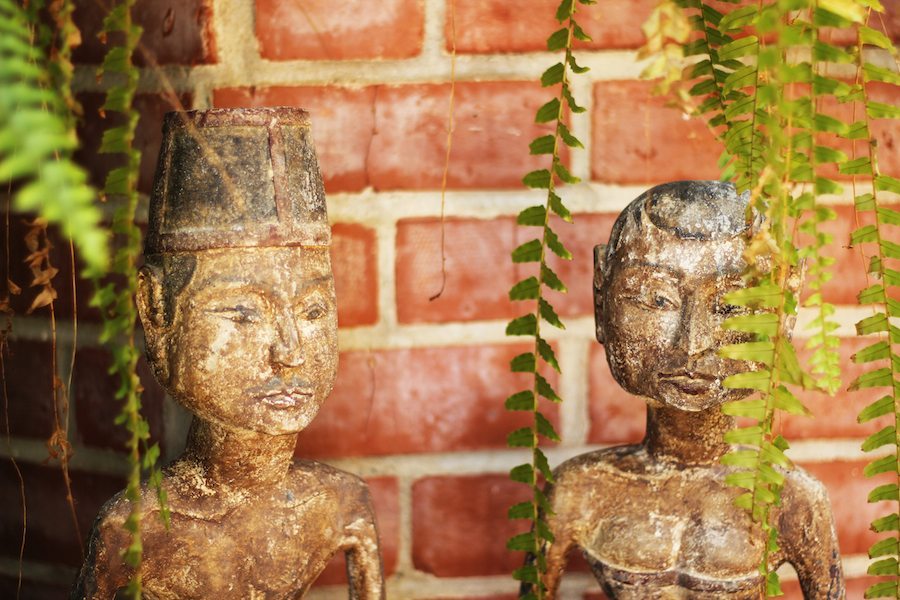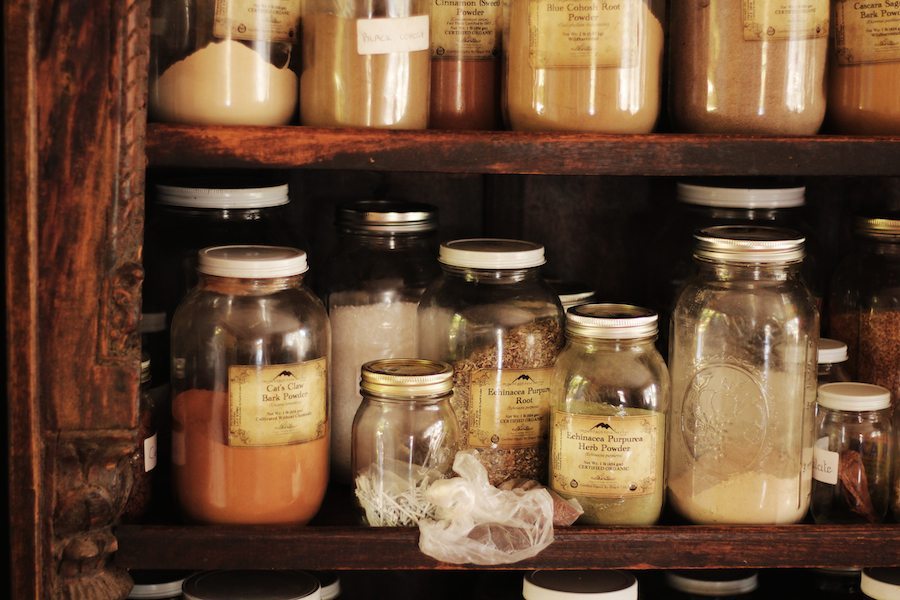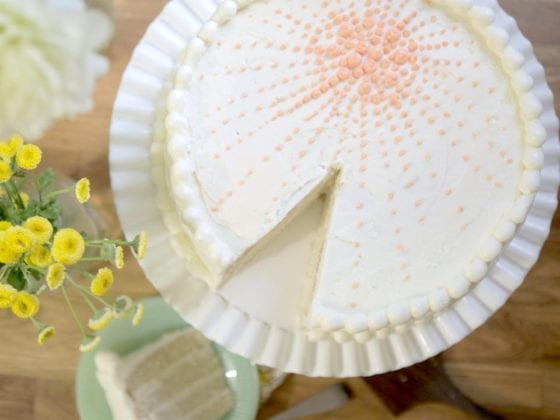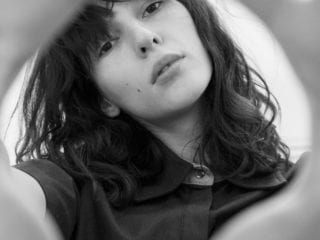It’s not everyday that you climb up onto a massage table naked, with only a strategically placed hand towel covering parts of yourself that few others should see.
It’s also not everyday that you stick out your tongue, have your pulse read and receive a wealth of targeted health advice from a woman you’ve just met — all while seated in a living room, a dog dozes at your feet and dreamy assistants drift in and out from the kitchen.
There weren’t any white lab coats. No florescent overhead lighting. I heard a faint breeze instead of an intercom buzzer. As someone who had studied and prepared for a medical career for almost twelve years, I was having a hard time reconciling my environment. Just what exactly was Ayurvedic medicine? What was I about to experience?
For starters, Ayurveda is more than simply a treatment of illness, as is the case with Western allopathic medicine. It’s a holistic philosophy based on the science of life; good health is the result of our three energies (Vata, Pitta and Kapha) being in proper balance. When any of our wind, fire or earth forces are out of balance, we experience maladies such as anxiety, indigestion, dry skin or sinus problems, to name a few.
Whereas many (myself included) tend to think a visit to a health practitioner is warranted only when something is wrong, Ayurvedic clinics like Surya Spa in LA’s Pacific Palisades exist for a more forward-thinking reason. Here Ayurvedic doctor, therapist and chef Martha Soffer, C.A.A., M.A.T. administers individualized Panchakarma treatments that nourish and restore the body to its proper functioning.
Because, what is “everyday” for the majority of us?
“Even on the toilet, it’s rush, rush, rush,” my masseuse whispered to me, slowly working custom-blended oils into my scalp, shoulders and along my arms.
I didn’t catch her name. I don’t think she had given one to me, but as I lay belly up in my towelette of a robe, she talked to me like a friend, a daughter even, someone who she sensed would greatly benefit from a self-granted reprieve of self-imposed stress.
Had my tongue and my pulse really given away so much?
For the next sixty (Possibly ninety? Or even thirty? Time grew wonderfully blurry.) minutes, my mind seesawed between a need to know and understand everything that was happening to me and a desire to be blissfully silent, openhearted, at peace. I’d had massages before; at one point I even signed up for one of those monthly membership spa chains so I could prioritize “Me Time,” but I canceled after eight months … with six months of unused massages.
At the onset I could tell Ayurveda was different. It wasn’t just about a quick fix to instantly right our daily, stressful wrongs. It was about that elusive word we’re all craving more of in our lives, balance. To be balanced is to mean we’re centered on something, something that anchors us deep below our surface-level situations. If we’re not, then life will knock us around far more than we care to admit. We’ll become reactionary instead of purposeful. Worn out instead of fired up. A product of our environment instead of a woman who leaves her mark.
To be balanced is to mean we’re centered on something, something that anchors us deep below our surface-level situations.
Ayurveda is about knowing that we don’t know everything, even when it comes to the mystery of how our heart knows its next beat. It’s also about rooting ourselves in what we do know, giving weight to what works for own body so that we’re continually re-centering ourselves on what’s important and what matters.
Having an open mind is imperative for this, because it’s only when we allow ourselves to encounter uncomfortable or unfamiliar experiences that we become more in tune with our fulcrum; we learn where our stabilizing, centering point truly lies. And also, how to get back to it.
My uncomfortable, unfamiliar manifested at Surya in an unexpected way. Sure, the decided lack of clothing was one thing, as was my first chlorophyll enema (I’ll spare the details), but beyond these was the ability to surprise myself — to be OK with embracing something new and in doing so, reaffirm the beliefs that I do want to center myself on.
We each have that opportunity every time we encounter something different; just because it isn’t what we’ve always known, that doesn’t mean it can’t anchor us deeper in what we do. We’re healthier when we’re balanced, and we learn balance as we make strides toward the person we’d like to be.
We’re healthier when we’re balanced, and we learn balance as we make strides toward the person we’d like to be.
Achieving the best version of ourselves takes intention. It also takes time. We all can’t realistically escape our responsibilities and detox for a week at Martha’s house, but we can incorporate the principles of her Ayurvedic practices so that our minds are retrained to resist the stress that so often comes our way. The Panchakarma experience she offers is a profoundly transformative detoxifying process lasting 3-21 days or even longer (on average, usually 7 days) and includes a nourishing diet and treatments lasting about 4 hours/day.
Before beginning Panchakarma, clients are prescribed a “home prep,” known as an oleation, in order to prepare the body for detoxing and for impurities to be removed from the system. Panchakarma or not, this home prep is actually recommended to do every three months with the change of the seasons. If you’re interested in making a more holistic connection to your body and, most importantly, having an open mind, read through the process below to see if it might be a fit for you.
Or, if you live in the Los Angeles area, schedule a 1.5 hour consult with Martha and be guided through a home prep, as well as learn many other suggestions for bringing yourself back into fundamental balance. As with any new medical or health related endeavor, please also be sure to check with your doctor to avoid any complications with ongoing treatments or current prescriptions.
PANCHAKARMA HOME PREP (Recommendations For Before & During Panchakarma)
GENERAL THOUGHTS
1) Drink 6-8 glasses of plain warm or hot water per day. Very important.
2) Good foods are those easy to digest: cooked fruits, well-cooked vegetables, light food. Don’t overeat before or during the cleanse. There’s a list of recommended foods at the end of this document, but in general, favor things like squash, asparagus, beets, green leafy vegetables, gluten free breads, Ezekiel bread, Manna bread and herbal teas. For breakfast, toasts and homemade rice cereal* are good. Dhal* (split mung bean) with white basmati rice and vegetables is an easy and nutritious lunch. For dinner, vegetable soups (though not cream-based) are nice.
3) Foods to avoid are things like sugar, yogurt, cheese, ice cream, curds (including panir), tofu, pizza, honey, sprouts, unsoaked nuts, cold drinks (room temperature water is okay), alcohol, meat, chicken, fish and dried fruits.
4) An easy way to cook your fruits or vegetables is to cut them up, add a little water to the pan (sauté but do not boil), add some raisons or figs if you like to both fruit or vegetables, and, if you like, a little cinnamon for flavor to the fruits. Sesame seeds are also a good topping on the basmati rice. Nuts should only be eaten if they are soaked overnight.
5) Since you’ll be taking ghee during Home Prep, please avoid other oils, butter, fatty foods and additional ghee during your Home Prep. After your four days of Home Prep, have less than your normal daily oils and fats, until your Panchakarma series (PK) is over.
6) Mainly, keep it simple. Eat if you’re hungry, don’t if you’re not. But don’t fast.
7) Avoid strenuous activity.
8) Avoid napping in the day.
9) Avoid sexual activity.
10) Avoid exposure to the cold, taking care to cover the head and neck.
11) Please don’t take herbs (Surya’s or others’) during Home Prep or PK.
13) Make sure you have some organic ghee, castor oil (be sure to use this brand only) and two fresh lemons or oranges on hand. We can help you with the ghee and castor oil.
14) Follow the above and the three steps below, and you’re done!
STEP 1: SNEHANA – GHEE TAKEN TO LOOSEN IMPURITIES
Five days before your PK is scheduled, unless Martha has directed you to take more ghee, please start the following:
Day 1: upon waking, take 2 TEASPOONS of Ghee
Day 2: upon waking, take 4 TEASPOONS of Ghee
Day 3: upon waking, take 6 TEASPOONS of Ghee Day 4: upon waking, take 8 TEASPOONS of Ghee
Ghee should be measured (and taken) in liquid form, and on an empty stomach. It’s easy. Melt the ghee on low in a metal cup or small pan, let it cool down if necessary, then measure your amount and take it. Twenty minutes after you take the ghee, have a glass of warm water. If you feel slightly nauseous (which doesn’t usually happen), have a glass of ginger tea (fresh, with real ginger). You can have breakfast after the water.
STEP 2: VIRECHANA – LAXATIVE TO CLEANSE IMPURITIES
This is typically an evening procedure, on the evening of Day 4, but, depending on your schedule, can also be done in the morning of Day 5, the day before your PK starts. Laxative results occur anywhere between 1 and 15 hours, but most commonly take place between 4 and 6 hours.
If you’re doing the laxative in the evening, have nothing heavier than a light soup for dinner, and make that an earlier dinner, two to three hours before you plan to take the Castor Oil. If you’d like, take a fifteen minute hot bath (or shower if no bath). Just before before you go to sleep, take THREE TABLESPOONS of Castor Oil in one of the two following ways:
Option A ) Put the three tablespoons of Castor Oil in 1/2 cup of hot water. Cut two oranges or lemons in half. Squeeze the juice from one orange or lemon into the cup of Castor Oil and water, and stir vigorously. Hold your nostrils closed, and drink the mixture quickly! Don’t let go of your nostrils. Bite into the other cut orange or lemon for five seconds. Then let go of your nostrils.
– OR –
Option B ) Take one tablespoon of castor oil and a sip of juice with warm/hot water, swish it around, then quickly swallow. Do the second spoon in the same way. This is Martha’s preferred way, but you may like the other.
STEP 3: THE LAXATIVE WORKING & WHAT TO DO NEXT
When the laxative starts working, pay attention to the number of bowel movements you have. Count each trip to the bathroom as one bowel movement, though if you spend a long time in the bathroom, count ten minutes as one movement. Depending on how many movements you have, and after the majority of the laxative effect has worn off, eat in the following way.
0-1 Movements: Call us for more instructions. Martha might have you take additional Castor Oil.
2-3 Movements: Follow the diet as discussed above (and detailed at the end).
4-6 Movements: For the first meal, a liquid diet, like tea, milk, juice (not grape). If you’re very hungry, you can have lentils or mung dhal. For the second meal, rice, dhal, lentils, a plain cooked vegetable, lassi with ginger and cumin. Don’t eat too much! For the third, vegetable soups, rice, and the diet outlined above. Don’t eat until the majority of the laxative effect has worn off. If you feel weak or hungry before then, you can drink warm water or juice (except for grape).
FOOD DURING HOME PREP
What follows are general guidelines. We may modify this for your particular situation, but usually not. Under any circumstance, all food (including fruit) must be cooked and warm, and thus, nourishing and easy to digest. Also, no caffeine during prep, as we want to calm your system down. If you’re not used to no caffeine, don’t worry — you’ll soon feel fresh and recharged. Also, if you’re in the area, you can always come by Surya Spa for lunch. We’d love to take care of you. Just let us know.
Finally, during PK, we will add additional foods that are right for you. After the cleanse, we’ll advise a good diet, unique to your situation, for you to favor, including, if appropriate, non-vegetarian foods, as well as dairy, additional fruits and vegetables, and certain sweeteners. Ayurvedic diet simply favors what’s good and avoids what’s not so good, all in an easy and gentle way.
FAVOR THESE VEGETABLES
Zucchini
Squash
Sweet Potatoes Or Yams
Asparagus
Carrots
Sugar Snap Peas
Green Beans
Peas
Kale/Chard/Collard Greens
Spinach
Celery & Celery Root
Fennel
Beets
FAVOR THIS FRUIT
Apples
Pears
Dates (less if you want to lose weight)
Raisins
Blueberries
Mangoes
Peaches
Nectarines
FAVOR THESE OILS (though not during “ghee days,” except the little for cooking)
Coconut
Oil Grapeseed
Olive Oil (though not heated)
FAVOR THESE MILKS
Coconut Milk (only home made)
Almond Milk
Goat Milk
FAVOR THESE SOAKED NUTS
Almonds
Walnuts
Macadamia
Brazil
FAVOR THESE GRAINS
Quinoa
Millet
White Basmati Rice
Brown Basmati Rice
FAVOR THESE SPICES
Turmeric
Coriander
Cumin
Fennel
Cinnamon
Nutmeg
Cloves
Sea salt
Basil
Mint
FAVOR THIS BREAD
Manna Bread (not the “Rice” one)
Ezekie
Millet bread
*MORNING RICE CEREAL RECIPE
1/2 cup brown basmatic rice
3 cups of water
Almond milk (1 handful of almonds, 1/2 cup of water, blend)
(If allowed for your Ayurveduic diet or prep, you can use milk instead of almond milk.)
1. Wash rice.
2. Put the rice in a rice cooker, add the water, select Porridge.
3. When done, take the rice out of the rice cooker, put in a saucepan.
4. Pour the almond milk into the rice without straining.
5. Feel free to add any or all of the following ingredients: apples, pears, walnuts, macadamia, pine nuts, chopped brazil nuts, raisins, dates, coconut or any other fruit allowed on your particular ayurvedic diet.
*DHAL RECIPE
Dhal (split yellow mung bean) is easy to make, easy to digest, and
nutritious. You can have it done quickly, or let it cook for hours, as we do,
by leaving the burner on very low and covering the pot.
Organic dhal is highly preferable. In any case, wash the dhal thoroughly
(even scrubbing quickly with your hands). 1/4 cup is good for 1 person.
Stir 1/4 cup of dhal into 1 & 1/2 cups of water (ratio 1 to 6, a little less
water if you like it thicker). Bring to a boil.
Lower the heat and simmer, covered, for 30 minutes. You can take the
foam off the top with a spoon as it rises (or whenever you like). Stir, put
the heat on very low, and leave it there for as long as you like, making
sure there is enough water so it won’t dry out.
Spices: Surya can provide you with vata-pacifying (or calming) spices, or
you can make a version yourselves from the following:
1/8 tsp turmeric
1/2 tsp salt
1/8 tsp cumin
1/8 tsp coriander
1/8 tsp fennel
If you’re doing home prep, then just put the spices and some fresh
cilantro right into the mung beans. During PK, or at any other time, heat
up a little ghee in a pan and sauté the spices. Add fresh cilantro to the
cooked spices, let that sauté, then add the whole mixture to the dhal,
putting a little water in the pan to get everything out if need be.
Dhal is delicious with white rice, basmati if possible.
Images via Nicole Ziza Bauer and Richard Douglas













